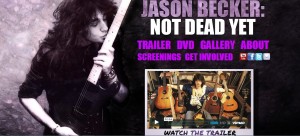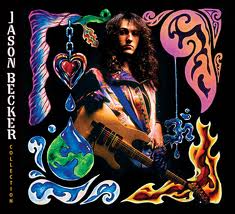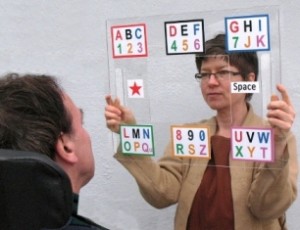By: Amy Roman, CCC-Speech Therapist.
Yesterday I spotted Jason Becker in a front page article in the San Francisco Chronicle. Jason achieved world fame as a virtuoso, speed-metal guitarist and songwriter while still in his teens. During the late 80’s he released 3 albums including one with David Lee Roth’s band and one as a solo artist, earning him the prestigious Best New Guitarist award from Guitar Magazine. Jason had achieved all of this prior to his diagnosis at age 20 with ALS.
I met Jason about 10 years ago when his father Gary, a poet and an artist himself, contacted me out of the blue. He and Jason, who was now unable to speak or move, had developed a way to communicate that required Jason move only his eyes. They live just outside of San Francisco so I went to visit them. Jason was completely paralyzed at this point except for a slight movement in one hand and a warm smile that could melt any girl’s heart (I’m just sayin). He was composing music and working on an album that has since been released.
Jason was gracious, charismatic and always delighted to talk about music. He explained (through his father’s translation of their eye coded system) how life remained rich for him because he was surrounded by creative and spiritual people and because he still heard music in his head and had maintained a non-diminished passion to share it. I enjoyed visiting with him, his dad and their friends. Over the next few months I brought by various computer eye-tracking systems for Jason to try. Each model provided Jason a means to control a commuter which enabled him to produce speech and compose music. He operated these systems beautifully and we did acquire one through his medical insurance.
Jason continues to use a music-composing computer program he controls with his eye movements. It never took the place though of the low tech system he and his dad had developed. Their system was fast and flexible and also brought in an element of human connection that eye tracking on a machine (though more independent) couldn’t somehow match.
Jason and his family, like many people with ALS, found it initially difficult to locate the help they needed to maintain communication as speech gradually became impossible for Jason. As a creative family, they developed their own method that was much faster and more efficient than having Gary slowly call out all the letters from A-Z until Jason blinked. The eye movement communication system Jason and Gary developed is uniquely theirs but does follow the principals of the E-Tran method. E-Tran is a standard, though thoroughly underused, low-tech Augmentative Alternative Communication (AAC) method.
Gary initially had contacted me because he wanted to share their method so others could benefit. Below is the video they made which demonstrates and explains their “Vocal Eyes” method. Also take a look at the video entitled “How to Communicate with Only Eye Movement. E-Tran Method”. Both work wonderfully as simple, inexpensive and versatile methods for expressing novel and unlimited ideas. I will follow up with more information on E-Tran as well as other communication systems that require only eye movement. E-Tran boards can be made at home or purchased online.
Instruction Videos for using Vocal Eyes or an E-Tran Board to Communicate with Only Eye Movement
|
Etran Communication from AmyandpALS on Vimeo. |
|
| Instructions for Becker’s Eye Communication Board “Vocal Eyes” | Instructions for using the E-Tran Method to Communicate |
Jason is currently contributing artistically to the world of music, sharing his personal and spiritual voyage through a book and blogs and inspiring us in an award winning new documentary about his life entitled Not Dead Yet  .
.




You will want to devise a system between the patient and caregiver or reader to indicate yes and no . This will help facilitate the speed of the communication process. Twitches, smiles, blinks, winks or any form of movement other then the eye itself can be used to set up the confirmation process. If only one such capability is evident, you should use this as an indication of no and no indication is yes and continue.
I agree with this suggestion. In each of our videos on low-tech communication methods we discuss the importance of establishing a yes/no response that is reliable, easy to produce and easy for the partner to read. Our video with instructions for using an Etran board is at amyandpals.com/aac-methods-low-tech.
This is amazing. I am working with someone who is learning the etran method and i wonder if this one is better as it can be done without the board eventually.
Looks like the family has memorized all the positions of the eye movements
Hi,
Yes, one of the advantages of using the E-Tran communication board is it can eventually be used without having the board. This is true for the AEeyeOU board too.
Ooh thank you. Do you have any intel on which of these three systems is the easiest or most intuitive?
Or what, if any are the benefits or differences between them in terms of user friendliness?
Thank you